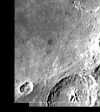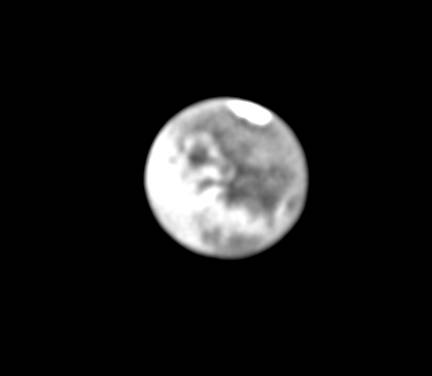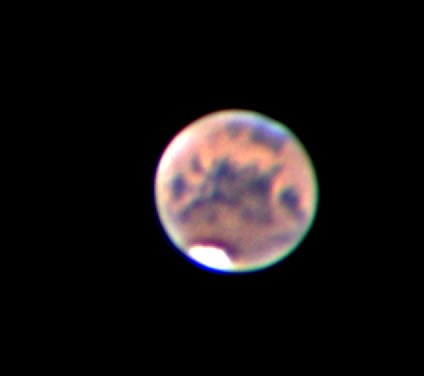|
EY
Ceph
|
"A Neophyte's Determination of EY Ceph Curves and Orbital
Constants" (PDF
file, 185K).
This paper was presented in May, 2002 to a meeting of the International
Amateur-Professional Photoelectric Photometry-Western Wing (IAPPP) in
Big
Bear, California. It describes intitial measurements of the EY
Cephius
eclipsing binary system. |
|
Flats
|
"Are Flats Really Flat?"
(PDF file, 42K).
I discovered a characteristic of the ST7E camera in which internal
reflections in the camera can create a 2% gradient in the flat.
Use
of the flat for calibration can then introduce an error when performing
high precision photomertic analysis. We show that a simple mask
can
prevent this effect. |
|
C11 Mirror Flop
|
"C11 Upgrade"
(PDF file, 20K)
Although the optics of the C11 were excellent, I was experiencing image
shift as the scope moved to different positions. I modified the mirror
cell of the scope to reduce mirror flop. This paper describes the
results. |
9P/Tempel1 Spectrum
|
"Spectrum of Tempel1"
(PDF file, 40K)
Spectrum taken on July 2, 2005 using DSS7 Spectrometer. Very poor
signal to noise, but the comet was faint: an interesting first
try. See below for better results.
|
More on Flats
|
"Just How Good are Flats?"
(PDF file, 987K)
This
paper reports research done on flats used in
CCD Photometry. I measured how well
different types of flats could, in fact, correct an image.
The work shows how to separate
out the effects of camera, optics, and flat source.
This PDF is the first half of a paper given at the 2005
meeting of the Society for Astronomical Science, and is
copyrighted by SAS. The complete original
paper
can be retrieved at http://www.socastrosci.org/Files/SAS_Proceedings_2005.pdf |
StarZap
|
"StarZap: A Method of Removing
Unwanted Stars"
(PDF file, 39K)
StarZap
is an automated program that can remove
stars that interfere with the measurement of asteroid brightness. The program uses tools available in
MaximDL. This PDF
(with
slight modifications) is the
second half of the paper described above.
The program and source code
(VB6) are open source and available free. Click here to download the installation zip
file, which
includes an essential "READ ME" file.
|
Spectroscopy Techniques
|
"Spectroscopy Techniques".
(PDF file, 551K)
This paper describes my setup using a C11 and DSS7/402 combination to
observe astronomical spectra. I also discuss briefly some of the
challenges of the operations, as well as corrections needed to make the
spectra useful.
|
Examples of Spectra, v.3
|
"Examples of Spectra".
(PDF file, 1.1M)
This paper gives some of my spectroscopic observations of
various objects, including M57, and Comets C073 and Comet Swan.
|
Comet
17P Holmes - Spectra
|
Comet 17P Holmes - Spectra and
Images
(PDF file, 1.5M)
Images and spectra of Comet Holmes - through November 29, 2007
|
Comet 17P Holmes - Coma
|
Comet 17P Holmes Coma Study
(PDF file, 800K)
An analysis of the coma density, including models and
measurements of transparency during the first eleven days after
outburst.
|
Drift Scan-o-meter
|
Drift Scan-o-meter
(PDF file, 1.1M)
A new method of performing a drift scan to measure
asteroid occultations. |
Flats Revisited
|
Flat Errors Are Not the Problelm
(PDF file, 377K)
Demonstrating how some "huge errors" in a flat source can
sometimes make no difference. Surpirse! |
18-inch, f3.5 Newtonian
|
Fast Newtonian Scope for
Photometry and Imaging
(PDF file, 8.6M)
This paper describes construction, testing and operation
of an 18-inch f3.5 Newtonian telescope, brought into service in 2007. |
Remote Scope Cover
|
Remote Operated Scope Cover
System
(PDF file, 1.3M)
Construction of a remotely
operated telescope cover (for the scope described above) and associated
electronics.
|
|
|
Can Global Warming be
Stopped? This Power Point presentation outlines a very
pessimistic (but realistic) view of our future ability to cope with
global warming.
(PDF file, 1.1M)
|
A Heretic's View of the 7th Principle
|
This is a lay sermon that
analyzes the Unitarian-Universalist 7th Principle (concerning the
interconnected web of existence) from a very different point of view
than is common. The sermon discusses global warming as a major
example.
(PDF file, 140 K)
|
|
This paper analyzes energy
sources that could substitute for fossil fuel. The conclusion is
that only nuclear electricity and conservation can meet the major needs
of the world in the short (40year) time available.
(PDF file, 116 K)
|
Comparing Video Cameras
|
How effective are new, more
sensitive video cameras for occultation measurements? This paper
reports my findings when I compared four cameras in six tests.
Results suggest that the increased sensitivity in some models is more
usesful than in others.
(PDF file, 4.4 M)
|
|
|







